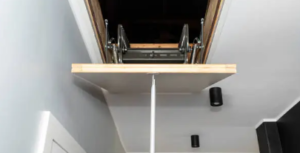Skylights, those elegant portals to the heavens, not only infuse spaces with natural light but also enhance architectural aesthetics and provide myriad benefits. However, ensuring their longevity and functionality requires attention to detail, particularly when it comes to skylight flashings. These often-overlooked components play a significant role in safeguarding against leaks, ensuring proper drainage, and maintaining the structural integrity of the building. In this article, we delve into the world of Velux skylight flashings Adelaide, exploring their importance, types, installation, and maintenance.
Understanding Skylight Flashings:
 In essence, a skylight flashing is a weatherproof barrier installed around the perimeter of a skylight, where it intersects with the roofing material. Its primary purpose is twofold: to prevent water intrusion and to facilitate proper drainage.
In essence, a skylight flashing is a weatherproof barrier installed around the perimeter of a skylight, where it intersects with the roofing material. Its primary purpose is twofold: to prevent water intrusion and to facilitate proper drainage.
Types of Skylight Flashings:
Skylight flashings come in various forms, each designed to suit different roofing materials and installation methods. The most common types include:
- Step Flashing: Ideal for asphalt shingles, step flashing consists of individual L-shaped pieces installed in a stair-step pattern along the sides of the skylight. This configuration ensures water is directed away from the skylight and towards the roof’s drainage system.
- Continuous Flashing: Typically used with metal roofing, continuous flashing is a single piece of metal that wraps around the skylight’s perimeter, forming a seamless barrier against water infiltration.
- Curb Mount Flashing: Commonly employed with curb-mounted skylights, this type of flashing involves a raised frame (curb) that surrounds the skylight and serves as a mounting base. Flashing is then installed around the curb to create a watertight seal.
- Self-Adhesive Flashing Tape: Offering convenience and flexibility, self-adhesive flashing tape adheres directly to the skylight’s frame, providing a waterproof barrier. It is particularly suitable for unconventional skylight shapes or retrofit installations.
Choosing the appropriate flashing type depends on factors such as roof pitch, roofing material, skylight design, and local weather conditions.
Installation Guidelines:
Proper installation is extremely paramount to the effectiveness of Velux skylight flashings Adelaide. Here are some essential guidelines to follow:
- Prepare the Roof Surface: Ensure the area around the skylight opening is clean, smooth, and free of debris. Repair any damaged roofing materials and apply an appropriate underlayment if necessary.
- Position the Skylight: Place the skylight in the desired location, following the manufacturer’s instructions. Use shims as needed to achieve a level and secure fit.
- Install the Flashing: Depending on the flashing used, follow the manufacturer’s guidelines for installation. Pay careful attention to overlap joints, sealant application, and fastener placement to maintain waterproof integrity.
- Integrate with Roofing Material: Flashings should seamlessly integrate with the surrounding roofing material to create a watertight seal. Properly align and secure each flashing component to prevent gaps or gaps.
- Apply Sealant: Use a high-quality roofing sealant to seal any gaps or joints in the flashing system. Pay close attention to corners, edges, and penetrations to prevent water infiltration.
- Test for Leakage: Once installation is complete, conduct a thorough inspection to ensure there are no signs of leakage. Use a hose to simulate rainwater and check for any areas where water may penetrate.
Maintenance and Inspection:
Regular maintenance is essential to preserving the effectiveness of skylight flashings and preventing potential issues. Here are some maintenance tips to keep in mind:
- Clear Debris: Periodically remove leaves, branches, and other debris that may accumulate around the skylight and flash. Debris buildup can impede water flow and contribute to water pooling, significantly increasing the risk of leaks.
- Inspect Sealant: Check the condition of the sealant around the flashing regularly. Replace any cracked or deteriorated sealant to maintain a watertight seal.
- Monitor Roof Condition: Keep an eye on the condition of your roof, especially around the skylight area. Look for signs of damage, such as missing or damaged shingles, rust on metal roofing, or cracks in flat roofing materials.
By serving as a barrier against water intrusion and facilitating proper drainage, flashings play an extremely vital role in maintaining the integrity and longevity of both skylights and the structures they adorn. Whether you’re installing a new skylight or maintaining an existing one, prioritizing proper flashing installation and maintenance is undeniably key to enjoying the full benefits of natural light while safeguarding your home or building against the elements.